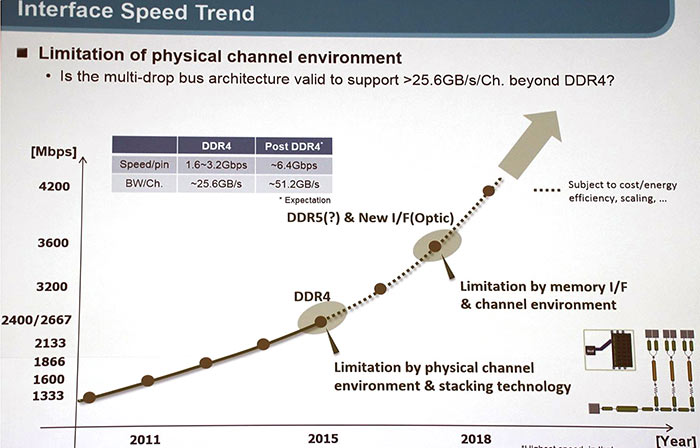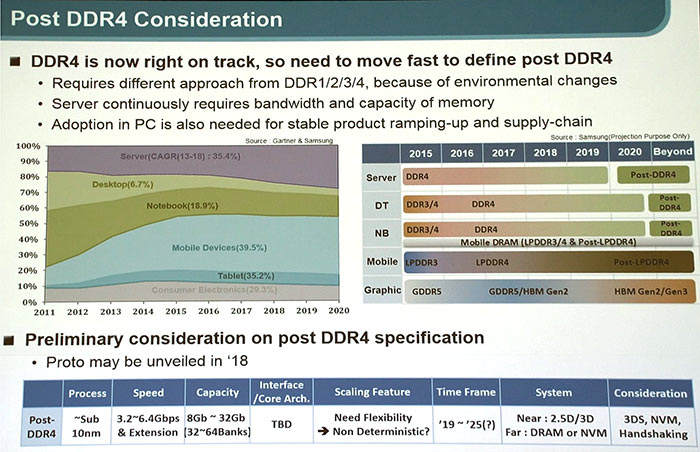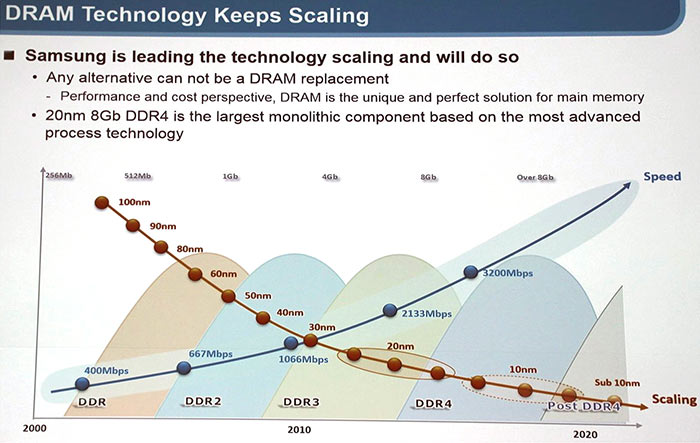At the IDF2015 last month Samsung revealed some slides which sketched out a preliminary timescale for the development and deployment of post-DDR4 memory. The South Korean electronics giant indicated that prototypes for the next generation memory would probably emerge in 2018 with adoption in components and devices starting in 2020.

Data rates of the next-gen RAM will rise to as much as 6.4Gbps per pin, enabling modules to be constructed offering over 50GB/s of bandwidth – that's double what is possible with DDR4. Production memory module capacity will range from 8GB to 32GB. In slides published by ComputerBase you can see that Samsung expects post-DDR4 memory to be produced on sub-10nm processes. You can see that in the near term future Samsung is considering using 2.5D or 3D architecture for the upcoming memory standard.

As you can see from Samsung's footnotes about the development, the possibilities are pretty open right now with various technologies under consideration for critical performance aspects of the post-DDR4 memory.

Looking at adoption, Samsung expects that post-DDR4 will be deployed in servers first with desktops and laptops following closely before 2020 is out. It is less clear when mobile devices will catch up and, as for graphics, the transition from GDDR5 to HBM2 is expected to become mainstream between 2017/2018.













